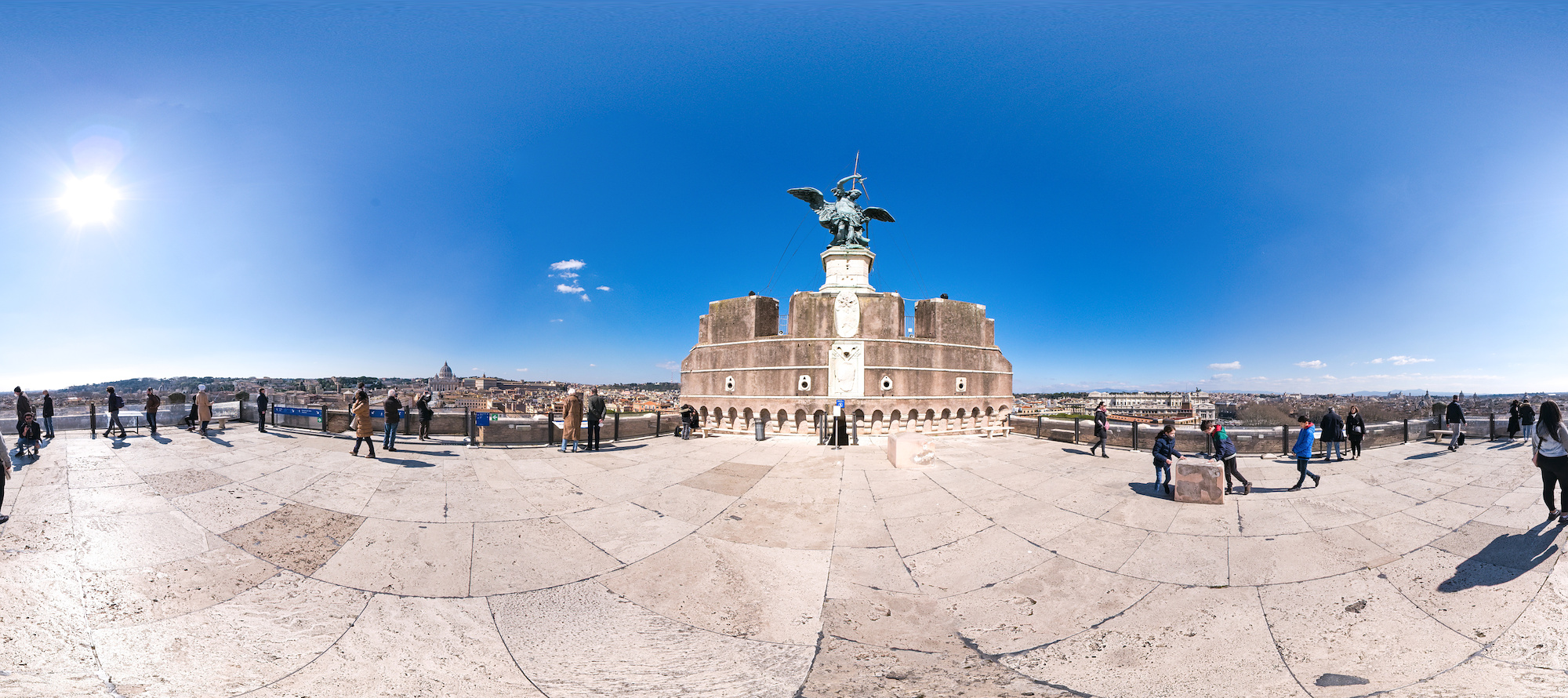Der Petersdom (Latainisch: Basilica Sancti Petri) ist eine Kirche im Renaissance-Stil inmitten der Vatikanstadt.
Saint Peter's Basilica (Latin: Basilica Sancti Petri), is a church built in the Renaissance style located in Vatican City.
Interactive Panorama of St. Peter's Square

Projektion "Kleinplanet"
Little Planet projection

Interactive Panorama of Saint Peter's Basilica

Die Basilika di Santa Maria in Ara coeli wurde um 1200 erbaut und ist für ihre farbenfrohe Fresken von Pinturicchio bekannt.
The Basilica di Santa Maria in Ara coeli was build in the 1200s, known for its vibrant frescoes by Pinturicchio.
Interactive Panorama of the Basilica di Santa Maria in Ara coeli

Übersicht über die Stadt vom Eingang aus.
View from the entrance overlooking the city.

Using a fisheye lens for street pictures as a universal wide angle lens lets you choose how the projection should look like.
 Index strip created with cPicture.
Index strip created with cPicture.
Rectangular projection


Equirectangular projection

Using a wide angle lens, you need to step much further to the back to get this field of view. With the fisheye, you stand right at the first step line.

Die Dachterasse des Schloß Sant'Angelo.
Sant'Angelo ist ein Schloß aus dem 2. Jahrhundert und hat eine Sammlung von Möbel und Bildern in den Renaissanceapartments.
The roof top of the Castel Sant'Angelo.
Castel Sant'Angelo is a 2nd-century castle housing furniture & paintings collections in Renaissance apartments.

Interactive Panorama of the Castel Sant'Angelo

Der Piazza del Popolo ist ein markanter Platz inmitten von Rom mit einem alten Obelisk.
The Piazza del Popolo is a landmark square centered by Rome's oldest obelisk & the site of the city's northern gate.

Interactive Panorama of the Piazza del Popolo

Der Piazza Navona ist ein eleganter Marktplatz aus dem 1. Jahrhundert mit klassischem Brunnen und Straßenleben.
The Piazza Navona is an elegant square dating from the 1st century A.D., with a classical fountain, street artists & bars.
Interactive Panorama of the Piazza Navona






 Index strip created with cPicture.
Index strip created with cPicture.







